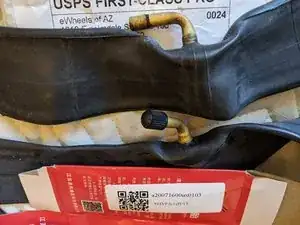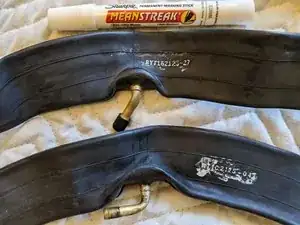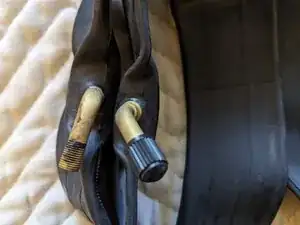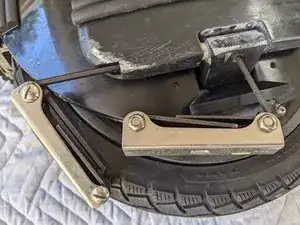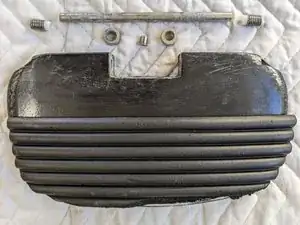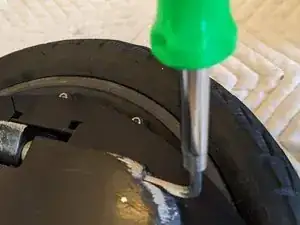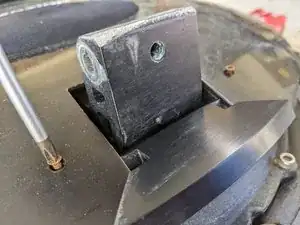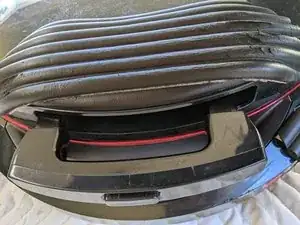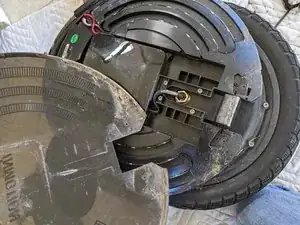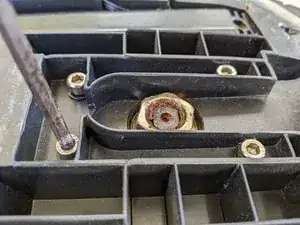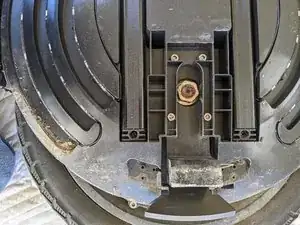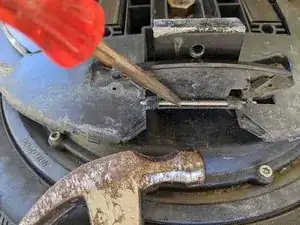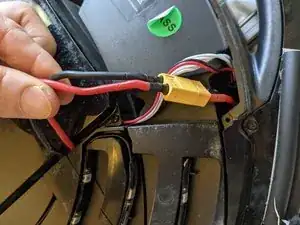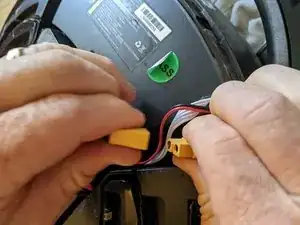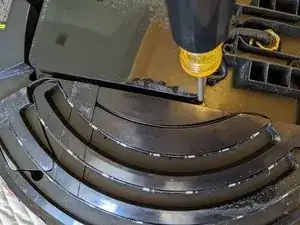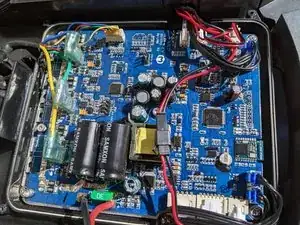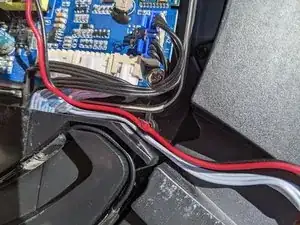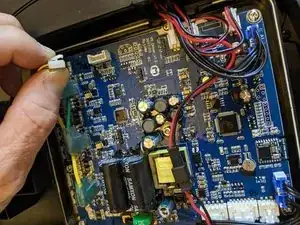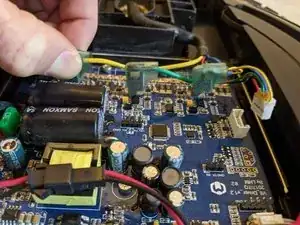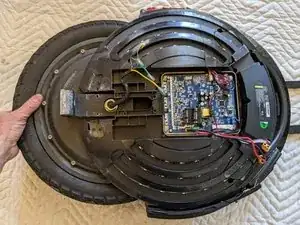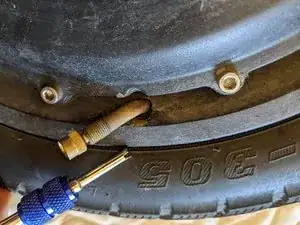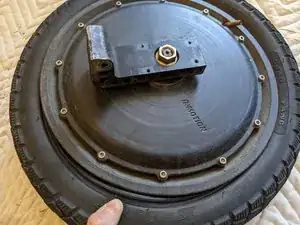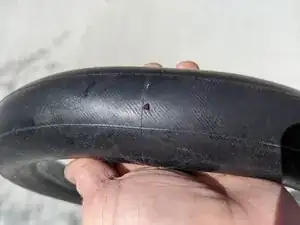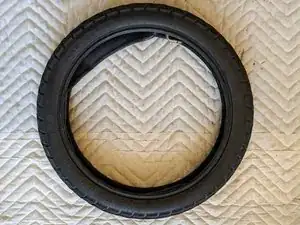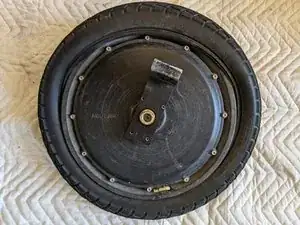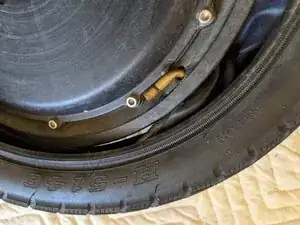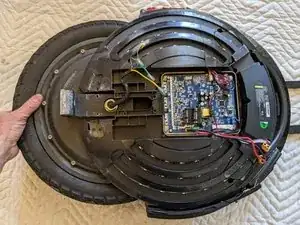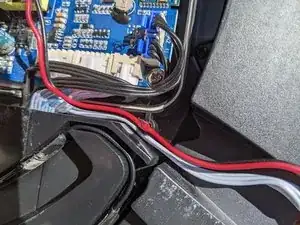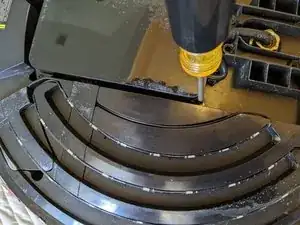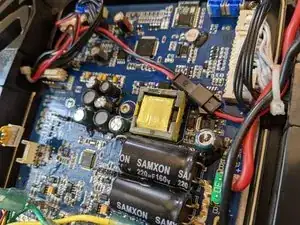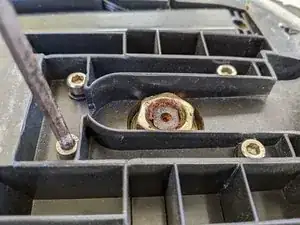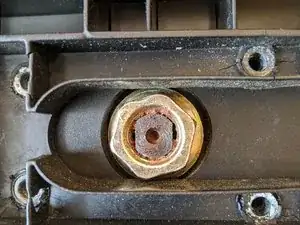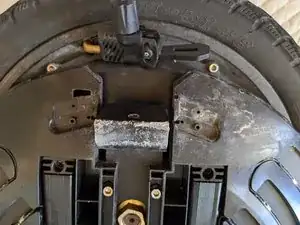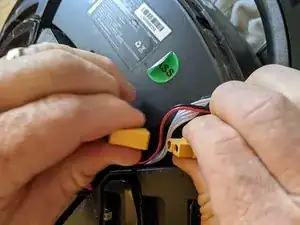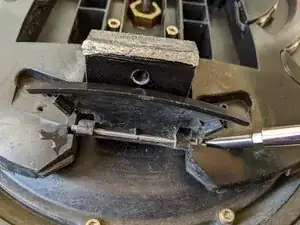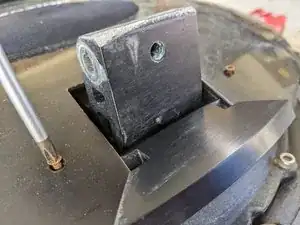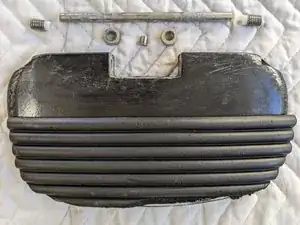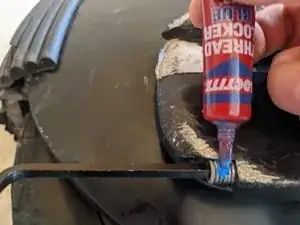Einleitung
This procedure involves disconnecting the battery, disconnecting the motor, removing the motor.
All screws are Right Hand Thread, use the "right hand rule." Turn counterclockwise to loosen during disassembly. Turn clockwise to tighten during reassembly.
charlesrg made a valiant attempt at tubeless conversion and reports it might not be possible.
Tire inserts like flattiredefender Tube Defender or Mr. Tuffy 2.5" tire liner could be installed. Haven't tried them, leave a comment if you find something that works.
Tire sealant like Armor-Dilloz could be installed. I'm concluding sealants work much better in tubeless tires.
Use road-worthy workmanship. Spread a dropcloth to keep from losing parts or introducing foreign objects, keep track of tools, don't over-tighten or fail to tighten snugly, use Loctite so screws don't back out, don't pinch or twist the tube, be careful handling wires and connectors and mindful of metal tools shorting circuit boards. Maintain the integrity of water seals and heat-sink interfaces.
Werkzeuge
Ersatzteile
-
-
The correct stem is bent 90 degrees aligned with the plane of the inflated tube
-
A stem bent 90 degrees and rotated normal/orthogonal to the plane of the tube will catch in the wheelwell
-
I was able to "cram" this tube with the stem that is bent about 60 degrees and rotated about 30 degrees. I had to twist the stem before and during inflation so that the cap wouldn't click against my wheelwell. It held air for about 300 miles and now I'm changing it again.
-
-
-
To change the inner tube or tire, you will need to remove both pedals
-
Use a 4mm Allen/Hex wrench to loosen the screw in the pedal hanger pillar. You will need to remove it to apply Loctite prior to reassembly. Turn counterclockwise to loosen.
-
Use a 5mm Allen/Hex wrench to remove the two screws that capture the hinge pin. Turn counterclockwise to loosen.
-
Insert a hex wrench at one end of the pedal to push the hinge pin out far enough that you can pull the pin out by hand.
-
-
-
Remove the two screws securing each lens, using a small Phillips screwdriver.
-
Open the trolley handle so that the lens can turn
-
-
-
Open the covers beneath each pedal so that the lens can turn
-
The lens is attached by "bayonet" hooks and should easily rotate a few mm counter-clockwise and lift off easily
-
The lens should rotate and the bayonet should disconnect, by applying a heel-strike to the right-hand side of the upper pad.
-
-
-
Remove bolts securing the wheelwell to the pedal hangers
-
Remove hinge pins beneath pedal hangers if still engaged
-
-
-
Pull the battery connector from where it is tucked beneath the right handle anchor
-
Using both hands to pull on the halves of the connector, disconnect the battery connector.
-
-
-
Using a small Phillips screwdriver, open the cover for the controller board
-
Unplug battery power from the controller board (the connector in line with the red and black pair of wires)
-
-
-
Observe and record (just take a photo...) which color of motor phase wire is connected to which terminal on the controller board. You will use this information during reassembly.
-
Disconnect the three motor phase wires (Yellow, Green, and Blue at the left of the photo) by pulling the connector (not the wire) straight up from the board
-
Disconnect the sensor connector. The connector is held on by an integrated clip, squeeze the lever to release.
-
-
-
Grasping the handle and the tire and pull apart to separate the wheelwell from the motor. The two parts should separate easily.
-
-
-
Deflate the inner tube by removing the valve core using a tool for Schrader valves. This could be a separate tool, or one that is integrated with the valve cap. The photo shows both tools.
-
-
-
Pull the tire to one side and deform the bead over the wheel. Rotate the tire and work the bead off of the wheel all around.
-
-
-
Inspect the tube and the tire and clean the inside of the tire to be certain that any damaging foreign objects have been removed
-
-
-
Apply any tire insert, such as Tube Defender from flattiredefender, or Mr. Tuffy tire liner. I haven't experimented yet.
-
Insert the tube into the tire. If there is a direction-of-travel arrow on the side of the tire, it should point opposite the direction of the valve stem.
-
-
-
Insert the valve stem into the wheel with the stem pointed away from forward rotation.
-
Work one of the beads entirely onto the wheel.
-
Inspect that the tube is not caught between the installed tire bead and the wheel rim.
-
Work the tube entirely into the wheel rim so that installing the second tire bead will not damage the tube
-
Work the second tire bead over the wheel rim.
-
-
-
Align and slide the motor assembly into the housing. This could be easiest with the motor upright and lowering the housing.
-
Reconnect the motor power and sensor wires to the controller board.
-
-
-
Inflate the inner tube to 30psi.
-
Verify that the tire spins freely and that the valve stem does not click against the housing.
-
Optionally, remove the core and apply a dose of tire sealant.
-
-
-
Reconnect the battery connector
-
Tuck the battery connector into the cavity beneath the right-hand anchor point of the carry handle.
-
Inspection point: This would be a great time to set the EUC upright on the floor and power it up to see that all of the control system is functioning correctly.
-
-
-
Thread the lens over the open trolley handle, fully open the trim pieces beneath the pedals, settle into place, and engage the bayonet attachment by striking the left side of the top pad using the heel of your hand.
-
Reinstall the small flat-head screws to retain the lens
-
The trolley handle should operate freely.
-
Repeat for second lens.
-
Close the trim covers beneath the pedals.
-
-
-
Thread the pedal, spacer bead, pedal anchor, second spacer bead, and remainder of pedal onto the hinge pin
-
Wipe clean and reinstall the 5mm screws at the ends of the hinge pin, first applying a drop of Loctite.
-
Reinstall the 4mm screw at the center of the pedal anchor, first applying a drop of Loctite.
-
Verify the retention force on the pedal is to your taste, adjusting the 5mm screws slightly as needed. I don't want the pedal to fall open, but I do want to be able to open the pedal using my foot.
-
To reassemble your device, follow these instructions in reverse order.
